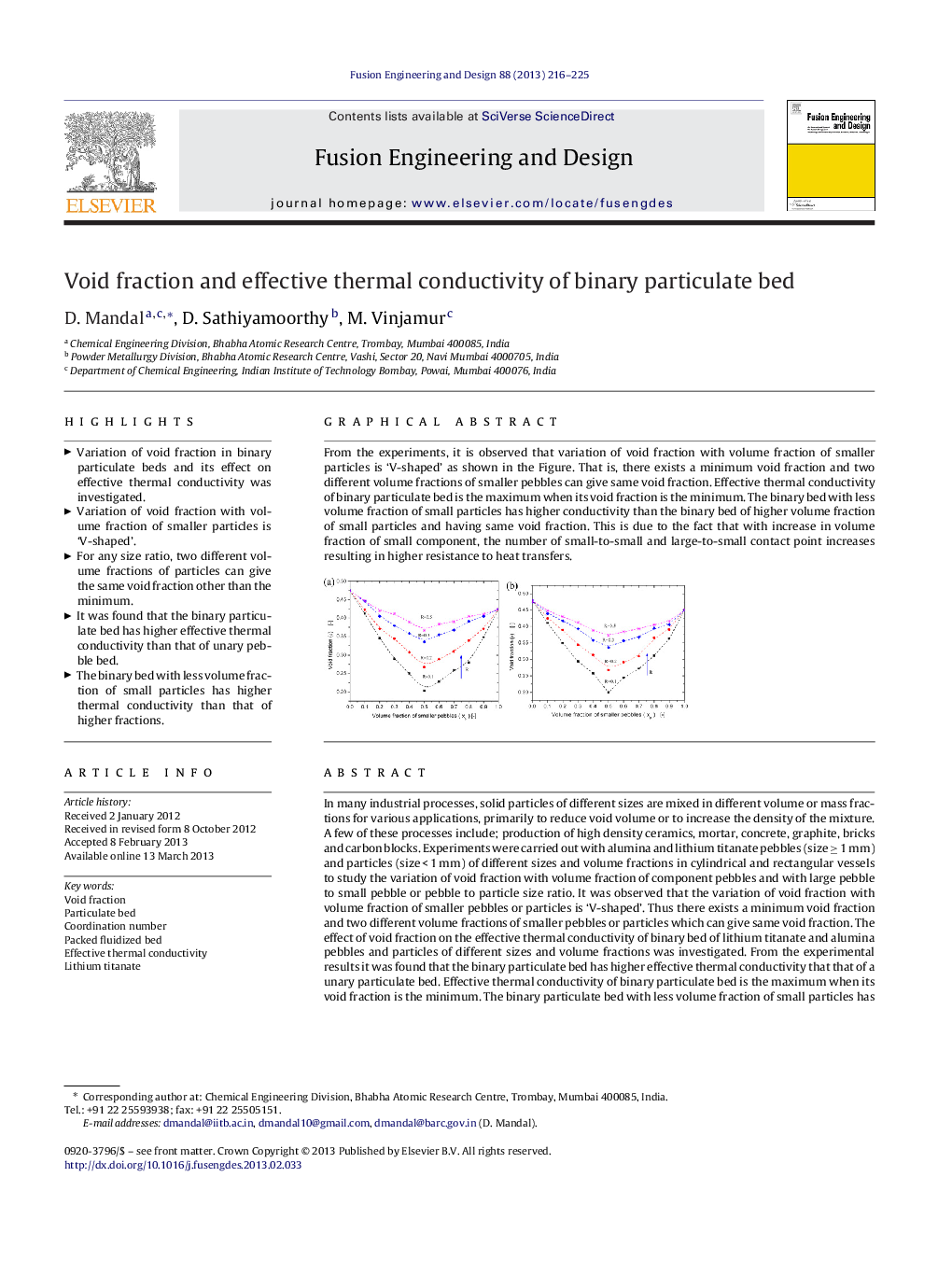| Article ID | Journal | Published Year | Pages | File Type |
|---|---|---|---|---|
| 271661 | Fusion Engineering and Design | 2013 | 10 Pages |
In many industrial processes, solid particles of different sizes are mixed in different volume or mass fractions for various applications, primarily to reduce void volume or to increase the density of the mixture. A few of these processes include; production of high density ceramics, mortar, concrete, graphite, bricks and carbon blocks. Experiments were carried out with alumina and lithium titanate pebbles (size ≥ 1 mm) and particles (size < 1 mm) of different sizes and volume fractions in cylindrical and rectangular vessels to study the variation of void fraction with volume fraction of component pebbles and with large pebble to small pebble or pebble to particle size ratio. It was observed that the variation of void fraction with volume fraction of smaller pebbles or particles is ‘V-shaped’. Thus there exists a minimum void fraction and two different volume fractions of smaller pebbles or particles which can give same void fraction. The effect of void fraction on the effective thermal conductivity of binary bed of lithium titanate and alumina pebbles and particles of different sizes and volume fractions was investigated. From the experimental results it was found that the binary particulate bed has higher effective thermal conductivity that that of a unary particulate bed. Effective thermal conductivity of binary particulate bed is the maximum when its void fraction is the minimum. The binary particulate bed with less volume fraction of small particles has higher conductivity than that of the binary bed of higher volume fraction of small particles and having same void fraction. This is due to the fact that with increase in volume fraction of small pebbles or particles, the number of small-to-small and large-to-small pebbles and or particles contact point increases resulting in higher resistance to heat transfers. The experimental details and results are discussed in this paper.
Graphical abstractFrom the experiments, it is observed that variation of void fraction with volume fraction of smaller particles is ‘V-shaped’ as shown in the Figure. That is, there exists a minimum void fraction and two different volume fractions of smaller pebbles can give same void fraction. Effective thermal conductivity of binary particulate bed is the maximum when its void fraction is the minimum. The binary bed with less volume fraction of small particles has higher conductivity than the binary bed of higher volume fraction of small particles and having same void fraction. This is due to the fact that with increase in volume fraction of small component, the number of small-to-small and large-to-small contact point increases resulting in higher resistance to heat transfers.Figure optionsDownload full-size imageDownload as PowerPoint slideHighlights► Variation of void fraction in binary particulate beds and its effect on effective thermal conductivity was investigated. ► Variation of void fraction with volume fraction of smaller particles is ‘V-shaped’. ► For any size ratio, two different volume fractions of particles can give the same void fraction other than the minimum. ► It was found that the binary particulate bed has higher effective thermal conductivity than that of unary pebble bed. ► The binary bed with less volume fraction of small particles has higher thermal conductivity than that of higher fractions.
